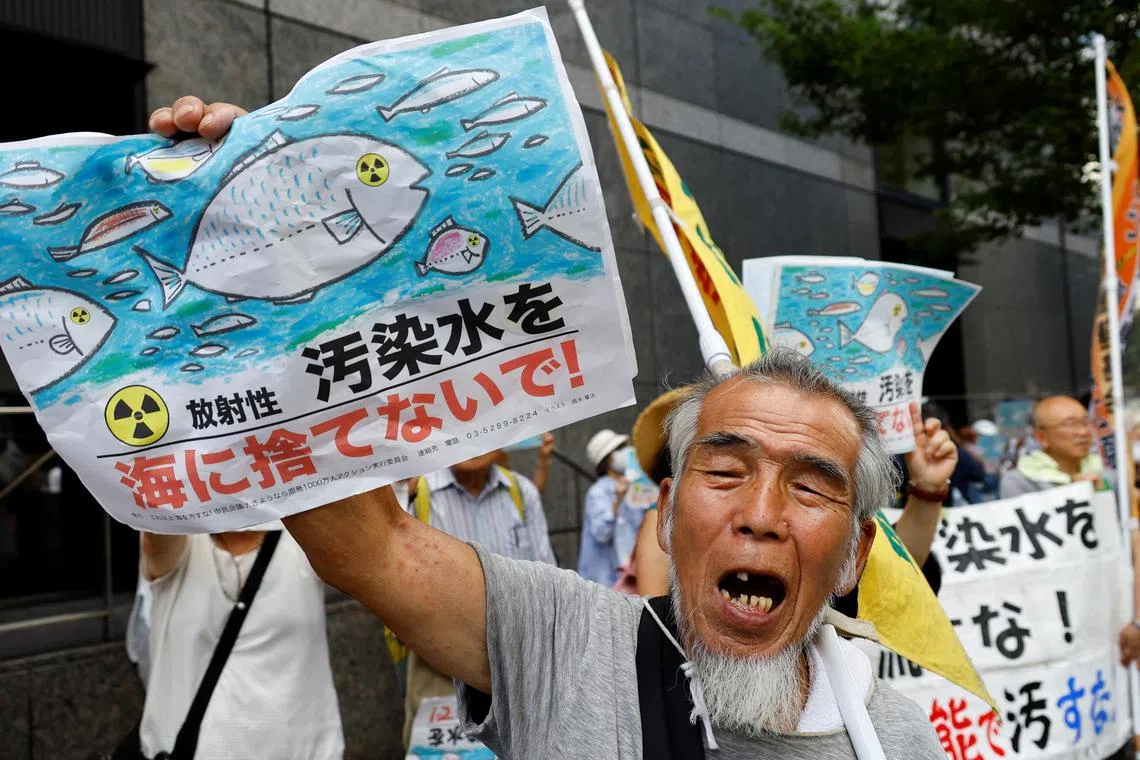A timeline: More than a decade after nuclear meltdown, Fukushima water release begins
Sign up now: Get ST's newsletters delivered to your inbox

A protester holds a card reading "No radiation contaminated water into the sea" during a rally against Japan's plan to discharge treated radioactive water, on Aug 24.
PHOTO: REUTERS
Follow topic:
TOKYO - Japan started releasing treated radioactive water from the crippled Fukushima nuclear plant
Here is a timeline of key events related to the accident in Fukushima and the subsequent clean-up.
2011
March 11: A 9.0 magnitude quake off the coast of northeast Japan triggers a devastating tsunami
March 12: Tepco begins injecting seawater to cool the reactors' fuel rods.
April 4: Engineers release more than 10,000 tonnes of contaminated water - about 100 times more radioactive than legal limits - that had been used to cool overheated fuel rods after running out of storage capacity.
Dec 16: Japan says damaged reactors are in stable state of "cold shutdown".
2013
July 22: Tepco says radioactive water has continued to leak from the plant into groundwater, making it radioactive, with implications for drinking water and for the Pacific Ocean.
2014
April 1: Residents begin to return to the 20km exclusion zone around Fukushima as decontamination of the area is completed.
June 3: Tepco begins work on an "ice wall" to slow the flow of ground water into the wrecked plant, but the build-up of contaminated water continues, slowing recovery efforts.
2018
Oct 1: Tepco says water treated at the Fukushima site still contains radioactive materials, and apologises to the government after previously insisting the materials had been removed. About a million tonnes of water are now stored at the plant, enough to fill about 500 Olympic swimming pools.
Nov 13: The International Atomic Energy Agency (IAEA) says Japan must urgently tackle the build-up of contaminated water.
April 13: Japan says it has decided to release the water into the sea, drawing ire from China, which calls the move "extremely irresponsible", as well as South Korea, which summons the Japanese ambassador. Local fishermen also opposed the plan.
2021
Dec 28: Japan maps out plan for the water release that includes compensation standards for local industry and compilation of a safety report.
July 4: Japan wins approval for the water release from the IAEA, the UN's nuclear watchdog, following a two-year review. IAEA says its plans are consistent with global safety standards and would have "negligible radiological impact" on people and the environment. REUTERS

